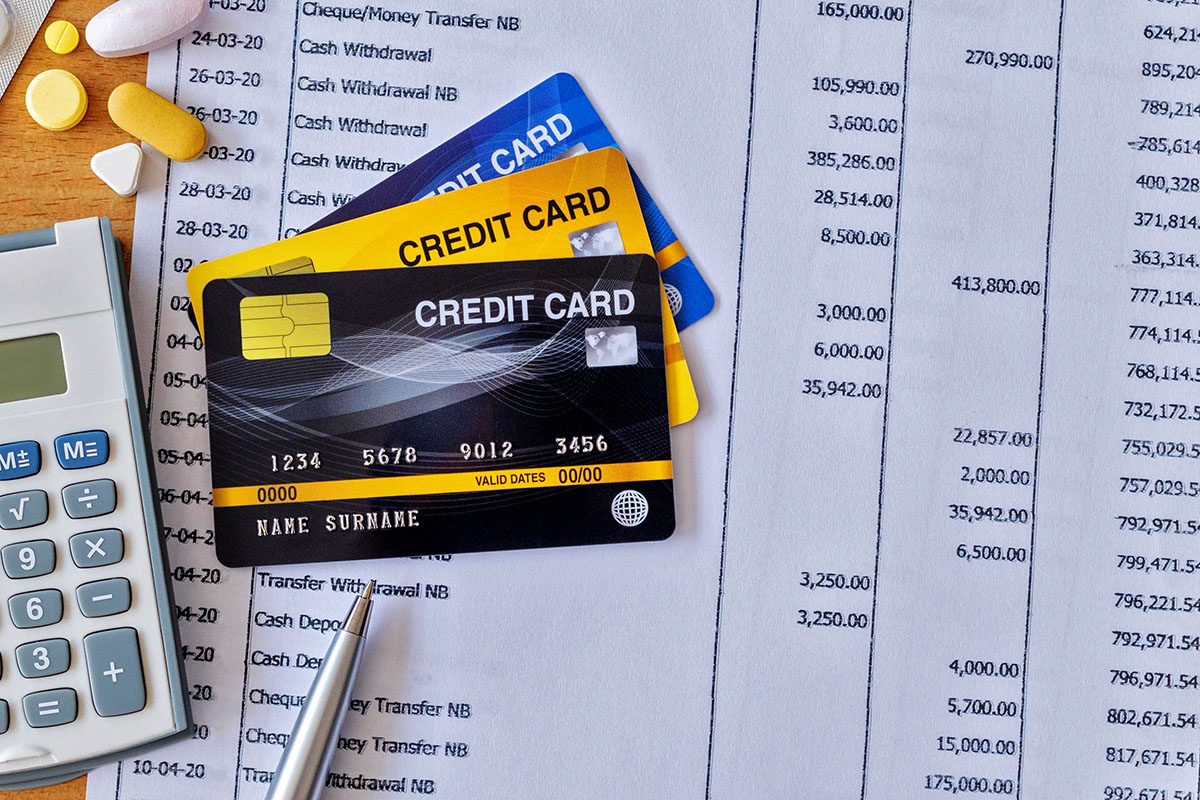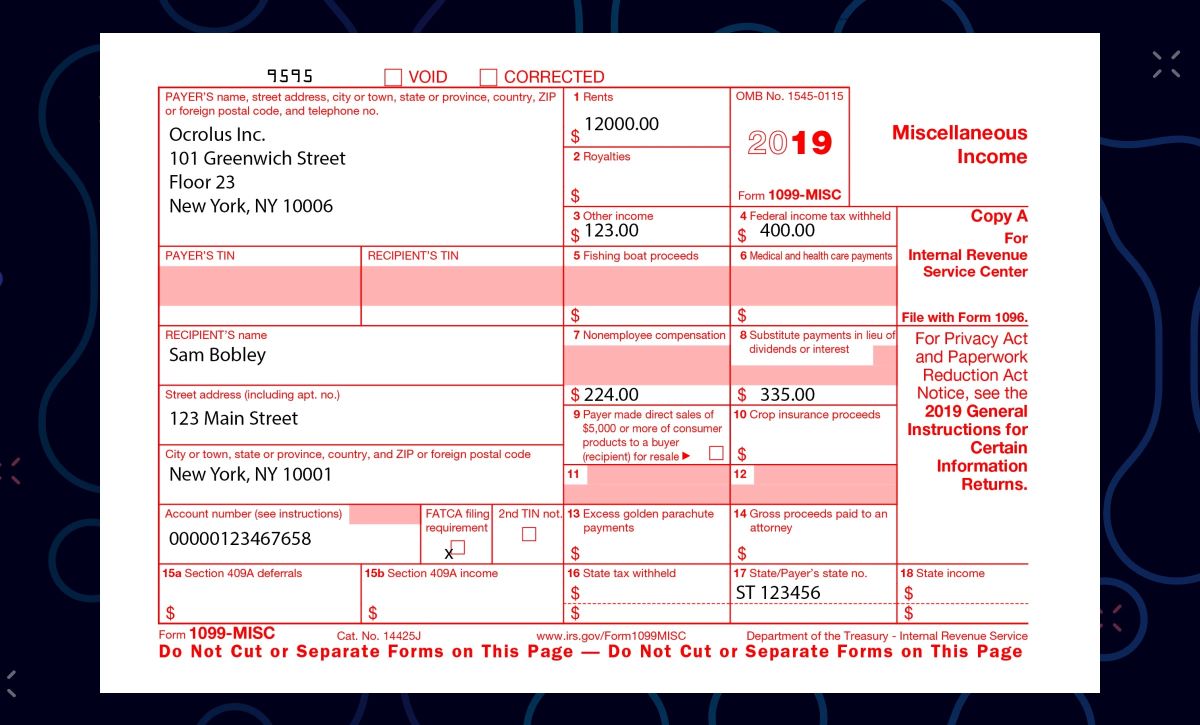

Finance
What Does SQ Mean On A Credit Card Statement
Modified: February 25, 2024
Learn what the abbreviation "SQ" means on your credit card statement. Get the answers to all your finance-related questions and stay informed about your financial transactions.
(Many of the links in this article redirect to a specific reviewed product. Your purchase of these products through affiliate links helps to generate commission for LiveWell, at no extra cost. Learn more)
Table of Contents
Introduction
When it comes to managing your finances, credit cards play a significant role in our daily lives. Whether we use them for everyday expenses, online shopping, or emergency situations, credit card statements provide us with crucial information about our spending habits and account activity. However, sometimes we encounter unfamiliar codes or abbreviations on our credit card statements that can leave us puzzled.
One such abbreviation that often raises questions is “SQ.” You may have noticed this code appearing on your credit card statement and wondered what it signifies. Understanding these codes is essential as they help us track our expenses accurately, detect fraudulent activities, and manage our finances effectively.
In this article, we will delve into the meaning of “SQ” on a credit card statement, explore the possible interpretations, and provide you with actionable tips to resolve any issues related to it. So, let’s dive in and unravel the mystery of “SQ” on your credit card statement!
Understanding Credit Card Statements
Before we delve into the specific meaning of “SQ” on a credit card statement, it’s crucial to have a solid understanding of how credit card statements work. Credit card statements are monthly summaries provided by credit card issuers that detail your card activity, including purchases, payments, fees, and interest charges.
These statements play a vital role in helping you manage your finances. They provide a clear breakdown of your spending, allowing you to track your expenses, monitor your payment history, and identify any discrepancies or unauthorized transactions.
Typically, credit card statements contain important information such as:
- Transaction details: The statement displays information about each transaction you made during the billing cycle. This includes the dates, merchant names, transaction amounts, and possibly additional details.
- Balance summary: The statement provides an overview of your balance, including the outstanding balance from the previous month, new charges, payments, and any applicable interest or fees.
- Minimum payment information: Credit card statements also include the minimum payment amount required for the billing cycle. It’s important to note that paying only the minimum balance can lead to increased interest charges and longer repayment periods.
- Payment due date: The statement specifies the due date by which you must make your payment to avoid late fees or penalties.
- Rewards and benefits: If your credit card offers rewards or benefits, such as cashback or airline miles, your statement may include information about your accumulated rewards or any upcoming promotions.
Understanding the layout and content of your credit card statement is essential for effectively managing your finances and ensuring that your account remains in good standing. Now, let’s explore the specific meaning of “SQ” on a credit card statement.
Explanation of SQ on Credit Card Statements
When you come across the abbreviation “SQ” on a credit card statement, it’s important to know that there is no universal definition for this code. Different credit card issuers may use different codes or abbreviations to represent specific transactions or circumstances. Therefore, the meaning of “SQ” can vary depending on your card issuer and the context in which it appears.
However, in some cases, “SQ” on a credit card statement may refer to a security question. When you make an online purchase or perform a transaction that requires an additional layer of authentication, such as a security code or a security question, the abbreviation “SQ” may appear on your statement to indicate that this additional security step was taken.
In other instances, “SQ” may represent a merchant code or category. Credit card companies use merchant codes to categorize transactions based on the type of business you made a purchase from. For example, a “SQ” code could signify a transaction made at a supermarket or grocery store.
It’s important to remember that the specific meaning of “SQ” on your credit card statement can only be confirmed by contacting your card issuer or examining the transaction details associated with the code.
In some cases, the abbreviation “SQ” on a credit card statement may also be an error or an unintended placeholder. If you notice any discrepancies on your statement or suspect fraudulent activity, it’s crucial to contact your card issuer immediately to investigate the issue and take appropriate actions to protect your account.
Now that we’ve explored some possible interpretations of “SQ” on a credit card statement, let’s take a look at some common credit card terminology to help you better understand your statement and resolve any issues that may arise.
Possible Meanings of SQ on Credit Card Statements
As mentioned earlier, the specific meaning of “SQ” on a credit card statement can vary depending on your card issuer and the context of the transaction. While it is not possible to provide an exhaustive list of all the potential meanings of “SQ,” here are some common interpretations:
- Security Question: In some instances, “SQ” may represent a security question. This could indicate that additional security measures, such as answering a security question, were required to complete the transaction.
- Merchant Category Code: “SQ” could be a merchant category code to categorize the type of business where the transaction took place. For example, it may indicate a transaction at a supermarket or grocery store.
- System-generated Code: At times, “SQ” may simply be a system-generated code or placeholder that does not have a specific meaning. It could be an anomaly or an error that appears temporarily on your statement.
It’s important to note that these are just possible interpretations, and the precise meaning of “SQ” on your credit card statement can only be confirmed by contacting your card issuer or examining the transaction details associated with the code. The best course of action is to carefully review your statement and contact your card issuer for clarification if you have any concerns or questions about the codes appearing on your statement.
To better understand your credit card statement and navigate any issues that may arise, let’s explore some common credit card terminology that you may encounter.
Common Credit Card Terminology
Understanding common credit card terminology can help you navigate your credit card statements more effectively and make informed financial decisions. Here are some key terms you may come across:
- Annual Percentage Rate (APR): The APR is the yearly interest rate applied to your outstanding balance. It represents the cost of borrowing money and is important to consider when carrying a balance on your card. Some credit cards offer introductory 0% APR for a limited time.
- Minimum Payment: The minimum payment is the minimum amount you must pay by the due date to keep your account in good standing. It is usually a percentage of your outstanding balance.
- Credit Limit: This is the maximum amount you can charge on your credit card. It is determined by the card issuer based on various factors, such as your credit history and income.
- Statement Balance: The statement balance is the total amount you owe at the end of your billing cycle. It includes all purchases, fees, and interest charges incurred during that period.
- Grace Period: The grace period is the time between the end of your billing cycle and the due date for your payment. During this period, you can avoid interest charges on new purchases if you pay off your statement balance in full.
- Cash Advance: A cash advance is when you use your credit card to withdraw cash from an ATM or obtain cash equivalent transactions, such as buying foreign currency. Cash advances usually have higher interest rates and may also incur additional fees.
- Balance Transfer: A balance transfer is the process of moving your existing credit card balance to another credit card with a lower interest rate. This can help save on interest charges, especially during promotional periods.
- Foreign Transaction Fee: A foreign transaction fee is a charge that may apply when you make purchases in a foreign currency or with a merchant based outside your home country. It is usually a percentage of the transaction amount.
Understanding these common credit card terms will empower you to make informed decisions regarding your credit card usage and effectively manage your finances. Now, let’s explore some practical tips for resolving credit card statement issues.
Tips for Resolving Credit Card Statement Issues
Encountering issues or discrepancies on your credit card statement can be frustrating, but there are steps you can take to resolve them effectively. Here are some helpful tips:
- Review your statement thoroughly: Take the time to carefully review your credit card statement. Check each transaction, payment, and fee to ensure accuracy and identify any unfamiliar or unauthorized activities.
- Contact your card issuer: If you notice any discrepancies or have questions about specific charges or codes, contact your card issuer immediately. They can provide clarification, investigate any potential issues, and guide you on the appropriate steps to take.
- Keep documentation: Maintain copies of your credit card statements, receipts, and any related documentation. These can be valuable for reference or dispute resolution if needed.
- Dispute unauthorized charges: If you identify unauthorized charges on your statement, report them to your card issuer as soon as possible. They will guide you through the dispute process and may issue a credit or investigate the matter further.
- Monitor your account regularly: Stay vigilant by monitoring your credit card account regularly. Use online banking or mobile apps provided by your card issuer to keep track of your transactions and detect any suspicious activities promptly.
- Be proactive with fraud prevention: Take steps to protect your credit card information from fraud. This includes safeguarding your card, being cautious while making online transactions, and regularly updating your passwords.
- Report lost or stolen cards immediately: If you misplace your credit card or suspect it has been stolen, report it to your card issuer immediately. They can deactivate the card, prevent unauthorized usage, and issue a replacement.
- Understand your rights: Familiarize yourself with consumer protection regulations and your rights as a credit cardholder. Knowing your rights can help you navigate any disputes or issues that may arise.
By implementing these tips, you can resolve credit card statement issues efficiently and ensure the accuracy and security of your credit card account. Now, let’s conclude our exploration of “SQ” on credit card statements.
Conclusion
Credit card statements provide valuable information about our financial transactions, helping us keep track of our expenses and manage our finances effectively. When encountering codes or abbreviations like “SQ” on our credit card statements, it’s important to understand their meaning to ensure accurate tracking and identification of any potential issues.
While the specific meaning of “SQ” on a credit card statement can vary depending on your card issuer and the context of the transaction, it could refer to a security question, a merchant category code, or even be a system-generated code. To get a definitive understanding of “SQ” on your credit card statement, it is best to contact your card issuer or review the associated transaction details.
Equipping yourself with knowledge of common credit card terminology can also enhance your understanding of your credit card statements. Terms such as APR, minimum payment, credit limit, and balance transfer are essential to grasp to make informed financial decisions.
If you come across any discrepancies on your credit card statement or suspect fraudulent activities, it is crucial to act promptly. Thoroughly review your statement, contact your card issuer, keep documentation, and monitor your account regularly to address any concerns and ensure the security of your credit card account.
Remember, your credit card statement is a valuable tool in managing your finances. By understanding the codes, terminology, and taking proactive steps, you can confidently navigate your credit card statements, resolve any issues, and stay in control of your financial well-being.














